Samsung Q70A Reviewed at $1,099.00 (55")
Product Name: Samsung Q70A
Product Description: 2021 4K QLED TV
-
Design - 8.9/10
8.9/10
-
Video Quality - 8.8/10
8.8/10
-
Ports & Connectivity - 9/10
9/10
-
OS, Apps and Features - 9.5/10
9.5/10
-
Price / Quality - 8.8/10
8.8/10
Summary
Reviewed at $1,099.00 (55″)
Pros
- Thin design
- Good brightness
- Nice colors
- Low input lag
Cons
- Average viewing angles
- Mediocre motion performance
- No local dimming
- Only one HDMI 2.1
Cheapest Places to Buy :
*We are a reader-supported website. When you buy through links on our site, we may earn a small affiliate commission at no extra cost to you. Home Media Entertainment does not accept money for reviews.*
The Q70A is a new 2021 release from Samsung that promises to offer a good balance between performance, features and price. And the arrival of the new Neo QLEDs has forced the QLED lineup to go down the performance ladder and be more of a mid-tier option compared to previous years. In our Samsung Q70A review today our goal is to determine if this model has what it takes to compete in the mid-tier segment and what kind of improvements, if any, are there compared to the Q70T that we had tested last year.
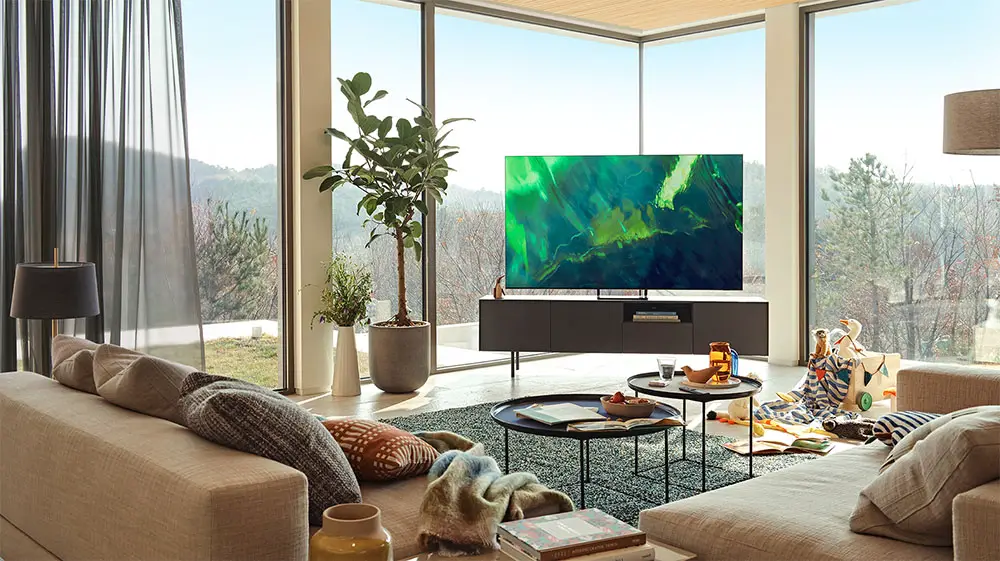
The Q70A is one of the three actual QLEDs being offered this year and sits comfortably in the middle of the three with the Q80A being the most advanced one while the Q60A is the last and most budget friendly in the series. The Q70A is really a mix of advanced and toned down features and is struggling to find a place between those who are looking for something better, quality wise or something cheaper. But with four sizes available it shows that Samsung is still backing this model a lot and hopefully it will find its place in the market the coming months.
But to keep things into perspective the new Q70A is using a 100/120Hz VA panel with a Dual LED backlight system while it’s the last TV down the ladder that gets the Quantum Processor 4K. It is also the cheapest Samsung TV that comes with a single HDMI 2.1 port along with all the other game centric features. On the audio front we get Samsung’s OTS Lite system while the new 2021 Tizen smart TV platform provides all you need in terms of online and smart functionality. Lastly the Q70A comes with a much improved AirSlim design that looks amazing either wall mounted or on a furniture.
What is important here is to see if the Q70A manages to offer what we saw in last year’s Q70T. We have seen time and time again new models failing to perform similarly as their previous counterparts so it will be interesting to see how this one will do. And without further delay let’s dive in…
Design
When it comes to the overall design there are clear similarities between the Q70A we have here and the Q60A but there are also a few notable differences. First of all once again we find Samsung’s extremely thin AirSlim design which means that overall thickness is down to just 1.10″ (2.8 cm) making it look amazing if you want to wall mount it. Its thickness is very similar across its entire panel with only a very subtle curve towards the top as usual. Its borders are thin enough not to distract from the overall presentation but they are made from plastic making them look slightly cheaper than they should.
Turning the TV around we see many similarities with the Q60A. In fact it seems that Samsung has used the same body for both of them with some notable differences with their ports layout and stand design. Overall the back is rather minimalistic with a brushed textured plastic as per usual while on the left we get all the connection ports and on the right the power connector. Just above the stand there are special grooves for cable management while in the center the VESA holes are the only element that breaks the otherwise monotonous look.
The stand that is used in the Q70A is rather unique and no other model goes for the same design this year. It is a central stand but with two small legs connecting the panel to the base. It has a cheap look to it but from what we could see it can hold the TV pretty good although some wobble was noticeable. On the back of these two legs there are special grooves so you can guide your cables through them and keep them out of sight. The stand is made in such a way that a soundbar can be placed on top of it if needed.
For 2021 it seems that Samsung decided to make a facelift on their One Remote and while fundamentally it’s the same one we have seen the last few years we do find some noteworthy changes. The remote is exactly the same as the one we saw in our QN90A and Q60A reviews so it seems that all QLEDs, Neo or not, are getting the new design this year. First of all its shell is still made out of plastic but has been redesigned and frankly it looks more premium now than before. Buttons layout has remained the same as last year but the big change with this one is that it doesn’t use disposable batteries. Samsung has included a solar panel at the back for charging or alternatively by using the included USB-C cable.

No other changes as we get the same built-in microphone that you can use in order to issue voice commands, it has the same HDMI-CEC functionality as it can act as a universal remote for other devices while it can also be used even if there is no support for HDMI-CEC. In general the remote got some cosmetic changes while the inclusion of a rechargeable battery is an interesting one even if not everyone will like it.
The Q70A is a mid-tier release and it really shows. The AirSlim design is great making these TV look better than ever and the redesigned remote is the best Samsung had for years. It is using a bit too much plastic and the stand looks a bit cheap but there are no major complaints here. The typical Samsung quality you would expect from this category.
Video Quality
Processor technology used
The Q70A is the last QLED this year to use the Quantum Processor 4K that we had previously seen in the Q80T and Q70T in 2020. It seems that the Q60 series remains the only QLED that is using a lighter version of this chip. This means that the Q70A features the same AI enhanced capabilities as far as it’s image and audio is concerned. These include a specialized AI upscaling engine that is combining complex algorithms and a huge image database in order to classify aspects like textures and edges, and to optimally upscale each specific scene.
We cannot say for certain if the processor offered in 2021 is exactly the same as the one we saw in the previous year as Samsung is not offering any specific specs for their processors other than some very oversimplified tech information.
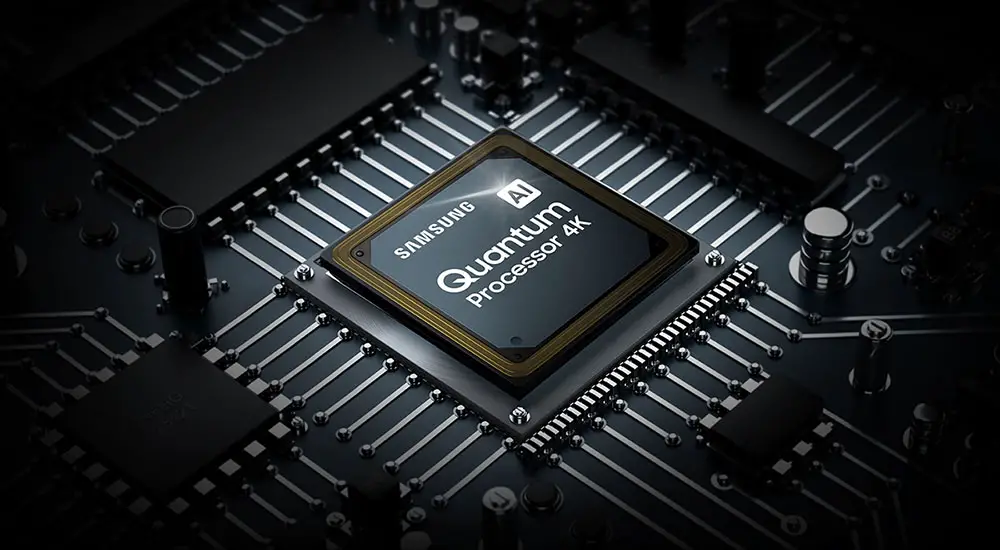
The Quantum Processors we always very capable at up-scaling content and the Q70A was no different as various videos we tried out in different resolutions provided us with very good results and minimal artifacts from the upscaling process. This included content in SD format, 720p and 1080p resolution. As always the better the source material the greater the result as the processor has more details to work with.
With such an advanced processor this TV also comes with Adaptive Picture which is a feature that analyzes the light conditions in your room and can calibrate the picture accordingly in order to provide you the best image quality for your specific situation.
But the Quantum Processor 4K is not only capable with images as it is used for some advanced audio enhancements also. As such we get SpaceFit Sound which uses a special sensor on the TV to analyze your room and provide the best acoustic result possible. Along with it special AI technology called Active Voice Amplifier (AVA) detects audio disturbances and enhances on-screen voices to deliver each bit of dialogue, loud and clear. We will talk in more detail about its audio capabilities in the dedicated audio section.
Lighting technology used
The Q70A may be a mid-tier QLED but when it comes to its backlight system it uses a less capable Edge LED system which is far inferior to the FALD one that is used in the Q80A. The TV is basically using the same system we found in the Q60A and is what Samsung calls a Dual LED backlight system with no local dimming.
This means that the Q70A instead of having the LEDs behind the panel there is an array of LEDs on the top and bottom of the screen. This type of backlight is cheaper to incorporate and thus is used in the lower tier models but as a result we get less light control and precision compared to a FALD system that was the top performing system until last year.
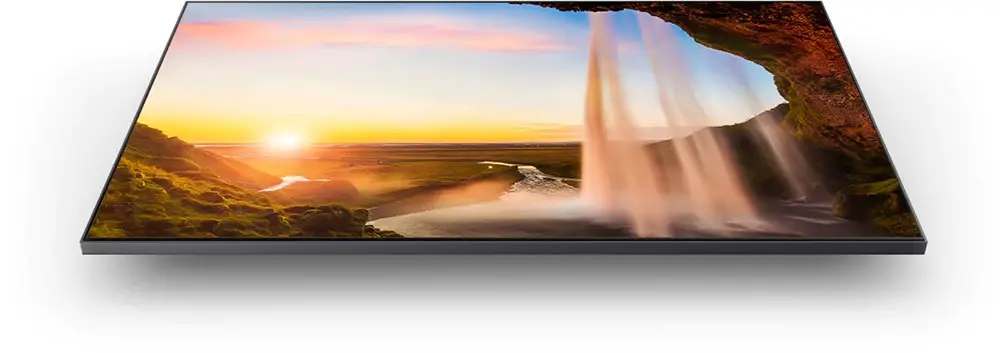
But while the Q70A is fundamentally using an Edge lit system from 2020 Samsung made some tweaks to it in order to improve, in theory at least, the final result. Samsung renamed this to “Dual LED system” which uses two different LED colors and adjusts the color tone according to the image being displayed. Additionally there is no local dimming that could further help with the weaknesses such a system has.
Other than that this type of system comes with the usual advantages and disadvantages. On the positive side TVs with such a system tend to be slightly thinner and this is indicative by the AirSlim design the Q70A uses but on the opposite side we tend to see strips of light from top to bottom when a bright object is displayed on the dark background. Also halos and blooming effects are more noticeable here compared to FALD TVs.
The Q70A along with the Q60A are using the same Dual LED system so in case you would like something better then you have no other option than to go a step above and look at the Q80A as it’s the only QLED available in 2021 with the far superior FALD backlight.
Brightness / Contrast
Brightness is one of the most important aspects of any HDR TV nowadays as with HDR content the need for high brightness output is bigger than ever. For our review we used the Movie mode and Warm 2 color tone along with max brightness. In our SDR brightness test over a 10% white window we got 581 nits which is more than enough for any kind of SDR material. On our HDR brightness test over a 10% white window we got 565 nits of brightness which is ok but not as bright as we would like overall for the best HDR experience.
In terms of contrast the Q70A comes with a VA which means good things in general and in fact what we saw was very close to last year’s Q70T. If you take this into consideration and also the fact that peak brightness seems to be slightly higher than last year it seems that the Q70A is in fact an improvement in this part, even if it’s not a huge one.

Viewing angles
We need to clarify something here. Samsung mentions that the Q70A is using Wide Viewing Angle technology but as with the Q60A we saw before this is not the same as the Ultra Viewing Angle tech that we have seen in some of the more premium releases. The Ultra Viewing Angle layer is the one that improves viewing angles in VA panels and this is missing from the Q70A.
As a result the Q70A has very mediocre viewing angles. We could say that the maximum angle that image integrity was kept was around 25 degrees or slightly above that. But at anything more than 30 degrees and the image would start to degrade very much to consider it watchable. So you should consider this if you want this one for family use or if you plan on watching from various angles.
HDR support
HDR support is another area where Samsung has included the same across their whole TV range. As such we get the most basic HDR10 that is required for 4K UHD playback, there is HLG that is used mainly for broadcasting along with the newer HDR10+ which is the most advanced HDR protocol that uses dynamic metadata in order to provide the best image quality on a frame by frame basis and is the main rival of Dolby Vision.
If you are hoping to get Dolby Vision then don’t as there is no hope for that in the immediate future. You will have to look at some of the other brands if this is something important to you.
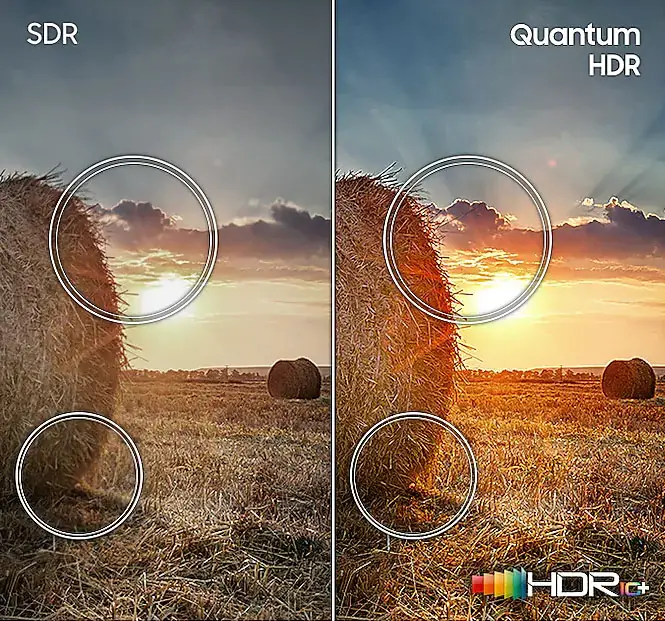
Color coverage
The Q70A being a QLED uses Samsung’s special Quantum Dot layer in order to display more vivid and lifelike colors. Samsung claims 100% coverage of the DCI-P3 color space but you should never take these numbers literally as they are mostly used for marketing purposes. So let’s see how close the Q70A can get to that.
According to our measurements the TV has about 90% coverage of the DCI-P3 color space which is exceptionally good for its mid-tier category. On the wider REC.2020 color space we got a coverage of 68% which is still good enough even if not as good as some other releases. These numbers indicate a marginal improvement over what we got last year in the Q70T. The difference may not be visible to the naked eye but the numbers are slightly improved which is good.
Motion performance
Next is our motion performance tests and the Q70A seems to come with a 100/120Hz panel along with a backlight dimming frequency of 960Hz which is exactly the configuration we saw in the QN85A recently. Having such a high frequency ensures that flickering is completely invisible but this also depends on the picture mode you will be using as in some of the them the frequency drops to 100/120 Hz.
Obviously we also get motion interpolation which for 2021 it has been renamed to Motion Xcelerator Turbo+. The Q70A was capable enough at removing motion blur and judder but when there was very fast action scenes with fast camera movements the TV struggled to keep the image without artifacts. In fact we saw more motion artifacts in the Q70A in comparison to what we had seen in our QN85A indicating that this TV has more trouble with more demanding scenes.

Enabling motion interpolation can be done, in the same way as with all other Samsung models, by going in the Picture Clarity settings in the menu and by adjusting the two sliders for blur or judder. Keep in mind that very high values in the sliders and the “Soap Opera Effect” will appear but keeping a very low value like 1 or 2 seems to be good enough without any major alteration to the overall motion presentation.
Black Frame Insertion (BFI) is also available as usual which can be enabled in the menu with the LED Clear Motion option. BFI is a technique that inserts a black frame in between two individual frames in order to smooth out motion. Although the end result is very good, it has a couple of side effects. First due to the black frames, brightness takes a visible hit while due to the lower frequency used which can be either 100/120Hz or even 50/60Hz some flickering may become noticeable.
The Q70A, as with many Samsung TVs this year, also supports FreeSync Premium Pro which can vastly improve your gaming experience if you have a device that also supports AMDs solution. The Q70A may seem to have the same specs as some higher tier models, like the QN85A, but in real world performance it didn’t manage to exactly show us the same capabilities when it comes to motion interpolation. In most cases it was good enough but in certain scenes its inability to provide a clear image was very evident.
Input lag
Next is our input lag test and the Q70A and we got no major surprises here. With Game mode turned on we got 9.9ms average for 1080p and 4K resolutions which is slightly better than what we had measured in the Q70T. Diving into single digit numbers will certainly please any kind of gamer, hardcore or otherwise.
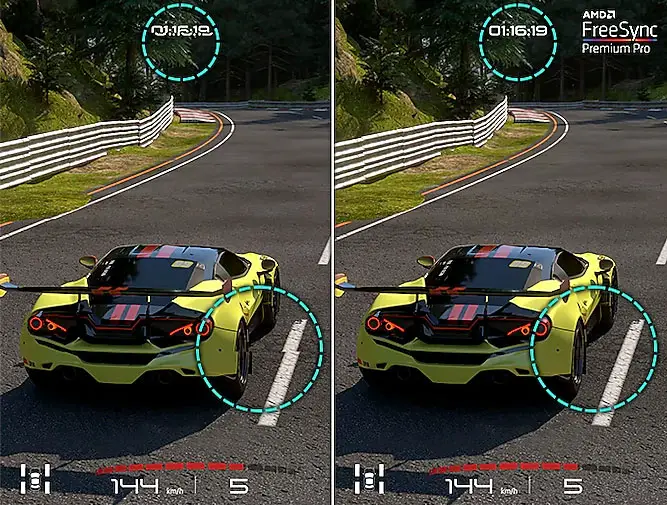
Outside of Game mode things are not so clear cut as different modes tend to give different readings but in general we got an average of 75.5ms which is respectable for casual and offline gaming where rapid response is not so crucial. This number is slightly higher than what we had seen the Q70T could do outside of Game mode. The TV also comes with Auto Low Latency Mode (ALLM) and all the latest consoles support this which can be of great benefit.
Before closing this part of our test we connected our PS5 for some F1 2019 action just to get some real world taste of its capabilities. No problems whatsoever as all our commands registered immediately on screen. No delays and no slow response resulted in a very pleasant gaming session. If you are looking for a relatively low cost gaming TV the Q70A will certainly please you.
Image quality impressions
The Q70A seems to be a small improvement over last year’s Q70T. Yes, the differences are not day and night but you shouldn’t expect them to be anyway. Improvements includes better brightness, slightly better colors and lower input lag. Everything else is more or less the same with small differences across the board. Overall if you are torn between the Q70A and last year’s model the 2021 is the clear choice.
Audio Quality
Manufacturers have tried the last few years to create audio systems that improve the overall audio signature of their flat TVs. Some fare better than others but most of them are not suited for anything more than casual viewing. Samsung’s proprietary system is called Object Tracking Sound and as with many other features they scale it according to the price of the TV on offer.

Last year the Q70T didn’t use that system and had to settle for a conventional 2 channels audio system that is the most usual we see in flat TVs. For 2021 it seems that Samsung decided to try and improve this and while we still don’t get the fully fledged OTS system at least we get some short of it which is called “Object Tracking Sound Lite” which is exactly the same variant we saw in the Q60A recently.
What this “Lite” version has different is that while both OTS and OTS+ systems use more speakers at the sides and top of the panel in order to track the sound according to what is displayed the one we have here is using a set of virtual speakers at the front in parallel to the two real speakers at the bottom. Obviously when it comes to virtual speakers the result can be a mixed bag. Certainly it can fare better than a simple 2.0 channels system but it will never have the clarity or precision of real dedicated speakers.
Just for the record the Q70A is equipped with a 2.0 channels system with a total of 20 watts of power and in parallel with the Object Tracking Sound Lite audio system you get sound that feels slightly more fulfilling and more immersive but not as good as we know that this system can do by using more speakers.
The TV supports Dolby Audio but there is no native Dolby Atmos. At least you can pass-through Dolby Atmos through the included eARC to some Dolby Atmos soundbar or dedicated sound system. DTS support is completely absent once again this year as it is not only missing from native support but it cannot also be passed-through from any of the available ports. Samsung has completely dropped DTS support which is a shame really.
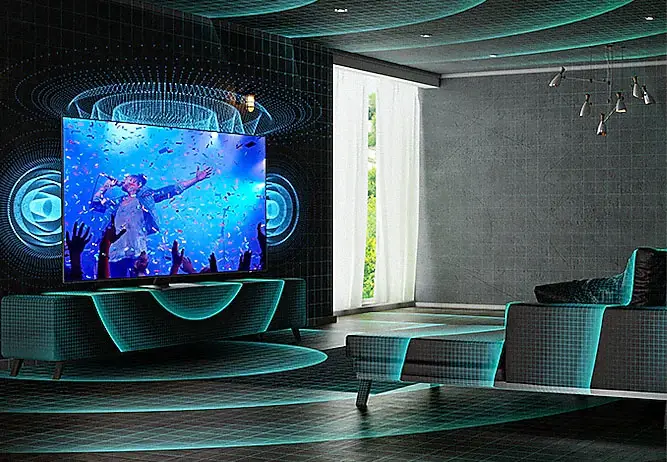
As we mentioned earlier the Q70A comes with SpaceFit technology which optimizes the sound depending on your room’s layout. This is done with the use of a special sensor on the TV that measures the acoustics of the room and makes the necessary calibrations. There is also the Active Voice Amplifier (AVA) which enhances the audio in case of external audio sources interfere with your experience. If for example some loud noise from the street is detected the TV will boost the sound to compensate.
A feature that finds its way from last year is Adaptive Sound but the one we get here is called Adaptive Sound+ which is essentially a more advanced version of this system. With Adaptive Sound+ the TV can automatically make adjustments for the best sound experience possible according to what content is viewed at each specific time.
Lastly we get Q-Symphony which is a feature that you can use to combine the TV’s audio system with an appropriate soundbar that also supports that. This way the audio will be synced and output from both devices for an even more immersive audio experience. Samsung has released a whole lineup of soundbars that support this feature in case you are thinking of getting one. Last year the Q70T didn’t have this so this one is an added feature in the Q70A for 2021.
With the inclusion of the OTS Lite system the Q70A was bound to be slightly better than last year’s Q70T. The differences are not huge but the Q70A managed to please us slightly more than what we expected. Very clear audio even in high volume with good separation between the two channels and some nice panning sound effects. For a mid-tier TV the sound system will suffice for casual viewing but obviously for anything more a soundbar or a dedicated surround system will be needed.
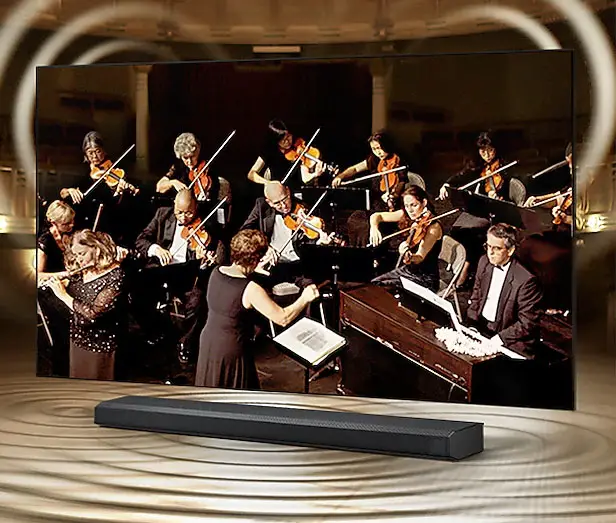
Ports and Connectivity
As previously mentioned all ports are located in a special inset at the back of the main body towards the left side with all of them looking sideways which can definitely help if you want to wall mount the TV. The only connector that is placed on the right side is for power. In fact the Q70A offers exactly the same type and layout that we saw in last year’s Q70T so no major changes here.
Now from top to bottom we find two USB ports, a digital optical audio output, four HDMI ports, an Ethernet port for wired connection to the Internet, an Ex-Link jack and the usual antenna port.
Obviously the most important fact here is that the Q70A actually have a HDMI 2.1 port (HDMI 4) with all the new game centric features this brings. We were hoping that since the Q70T was also equipped with a single HDMI 2.1 port this year we could get a few more but no luck unfortunately. There is also eARC functionality in HDMI 3 if you are interested to pass-through Dolby Atmos to an external audio device.
Another disappointing is the fact that we still find those old USB 2.0 instead of the more new USB 3.0. The latest ports are still not widely used so it’s no surprise really.
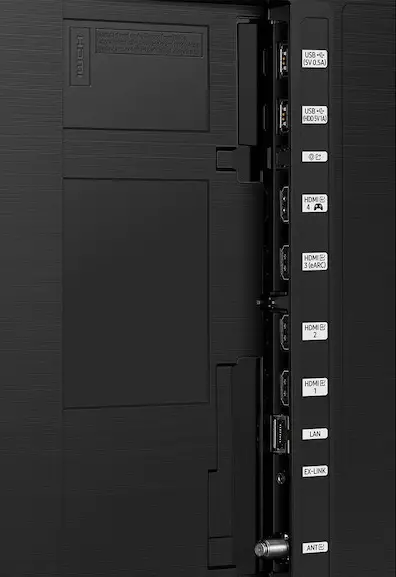
When it comes to the TV’s wireless capabilities we find built-in WiFi (802.11ac) as well as Bluetooth v4.2. We were hoping for Bluetooth v5.0 but unfortunately Samsung is using Bluetooth 5.2 only in their 8K releases so far.
OS, Apps and Features
The Q70A uses the latest version of Samsung’s Tizen and in terms of features and smart TV functionality it is pretty much the same as the rest of the 2021 releases so this section will be similar to what we had observed before and we will make any necessary additions or changes whenever necessary.
The 2021 version of Tizen is highly similar to previous years and the visual appearance of the new 2021 is no different from last year. Samsung retained the more dark visual design but this is purely an aesthetic thing and functionality remains as good as ever.
The general layout has remained completely the same with the launcher bar sitting at the bottom of the screen while a second row appears on top and offers several selections that include additional content and various suggestions. Customization couldn’t be missing as with so much content available it can become increasingly difficult to navigate through the apps and services especially if you use many of them at the same time. Tizen offers many customization options so you can re-arrange everything to your liking.
The first real addition in 2021 is the Super Ultrawide GameView & Game Bar. This is an on-screen menu that lets you make real-time adjustments to screen ratio, input lag check, FPS, HDR, wireless headset settings and more. This can be a really handy feature to gamers as you don’t have to mess with menus every time you want to check on a specific setting. With this quick feature you have everything in front of you with the click of a button.

When it comes to content the Tizen platform is famous for it’s enormous support from developers. The Q70A offers practically all known services and platforms you can think of with Netflix, Apple TV, Disney Plus, Youtube, Amazon, Hulu, Rakuten, Demand 5 and BBC iPlayer just a few of the big names available. There is also Samsung TV plus which offers hundreds of subscription-free channels to choose from. Many of these services can playback in both 4K with HDR like Netflix and Amazon while in general navigating through several services felt smooth and without any noticeable lagging.
But if having so many apps available can be increasingly difficult for you then you can use a handy feature called “Universal Guide” which is another feature that makes its return from last year. This is a feature that analyzes your viewing patterns and creates a ‘For You’ page that includes content you may be interested in watching according to your viewing habits. So in case you like a specific series this page can propose you to see the next available episode which can be a rather practical feature.
Moving on for one more year we get SmartThings integration. With it you can make your TV the central hub of all your smart houses devices. These can be lights, electronic locks, alarms, vacuum robots, thermostats and everything that supports the SmartThings platform.
Obviously another feature that could not be missing is voice control. It seems that Samsung is really trying to market their own Bixby service but even if you are not very fond of that there is Amazon’s Alexa or Google Assistant to choose from. While if you are an Apple guy then don’t get disappointed as there is also Airplay support and you can use Siri through it for your voice commands.

One feature that we saw for the first time last year and makes a comeback is Multi-View and although at it’s core it’s not something entirely new Samsung took it a step further. Multi-View is basically a more advanced screen mirroring and with it instead of just simply projecting the screen from your mobile device on the TV you can choose to have two screens showing both TV content and what your mobile device shows. There may not be huge demand for such a feature but obviously the more the better.
In addition to Multi-View there is also Tap View and with it you can mirror your phone on your TV with just a tap to continue enjoying movies, music, and apps on the bigger screen within seconds.
The Q70A also comes with Ambient Mode which seems to have become the standard in less expensive units lately. Keep in mind that this is the simple and not the plus version we saw in the QN90A and as a result comes with less functions available.
Another feature that is new this year is the PC on TV function which enables you to connect your PC, or any computer for that matter, to the TV in a seamless and easy way.
Lastly we have one more new addition this year and this is Samsung Health. It seems that with the coronavirus pandemic and many people staying indoors Samsung thought that exercise at home would become more popular. So many of their TVs this year come with Samsung’s program in order to stay in shape. If you like to exercise at home you may like this one but otherwise we don’t see this being used very much.
Overall the Q70A comes with the full Tizen treatment. There is hardly anything missing here and the TV really is a smart functionality powerhouse.
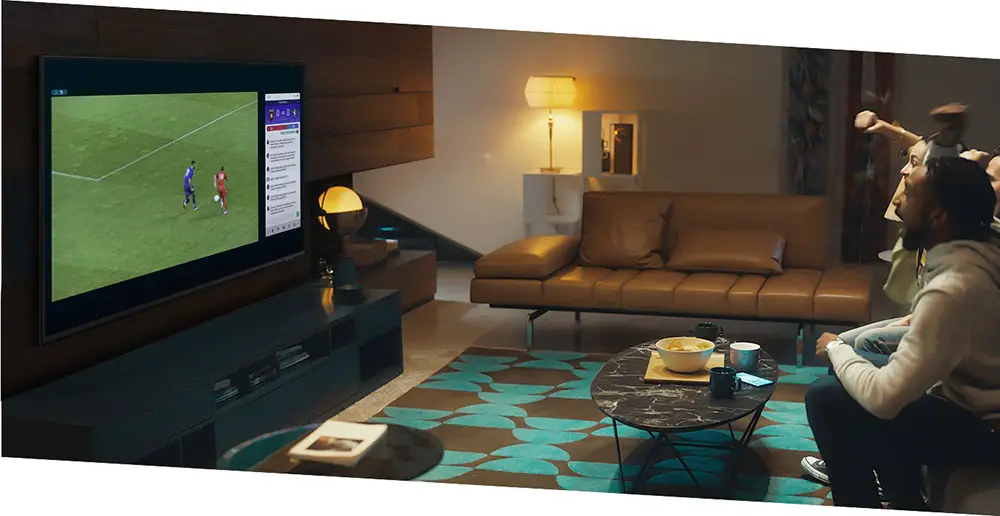
Final Thoughts
With the new Neo QLEDs on the market now the previous QLED lineup was bound to be pushed down the performance ladder. What was crucial was if the new Q70A would be able to offer similar results to last year in order to keep its value as a good quality mid-tier release. And it seems that the unit not only was able to achieve good results but also managed to do slightly better than the Q70T in several of our tests.
Differences were not as huge as one might expect but even some small improvements are always welcome. As such the Q70A was able to produce more brightness both in SDR and HDR content, offer slightly better colors and have even lower input lag than before. Everything else was similar to last year but the good thing is that the Q70A didn’t underperform in any area compared to last year which was our biggest fear. As such the new release is a clear improvement even if a small one. And if you add the inclusion of the better OTS Lite audio system and the new Tizen 2021 along with the redesigned remote then it clearly goes past its predecessor making it the clear choice between the two.
As for its downsides what we can say is that the omission of a local dimming feature does hurt its overall image quality. Also because it’s using a VA panel viewing angles are not good at all so if you want to use this as a family TV we suggest you to test it out first before purchasing it. One HDMI 2.1 port may not cut it for some users even if the new port is still not widely used while in general its brightness is not the best there is and while HDR is ok on this TV it will not wow you like some higher tier models can. And lastly motion performance was so and so and its motion interpolation capabilities leave a lot to be desired.
Overall the Q70A is a nice improvement over last year and combined with the right price it can be an excellent choice for those looking in the mid-tier section. It has a few good things going for it but the necessary toned down specs hold it from becoming a really good TV. But if you are tight on budget and you are not interested in very advanced features the Samsung Q70A is a rather good choice to go for.
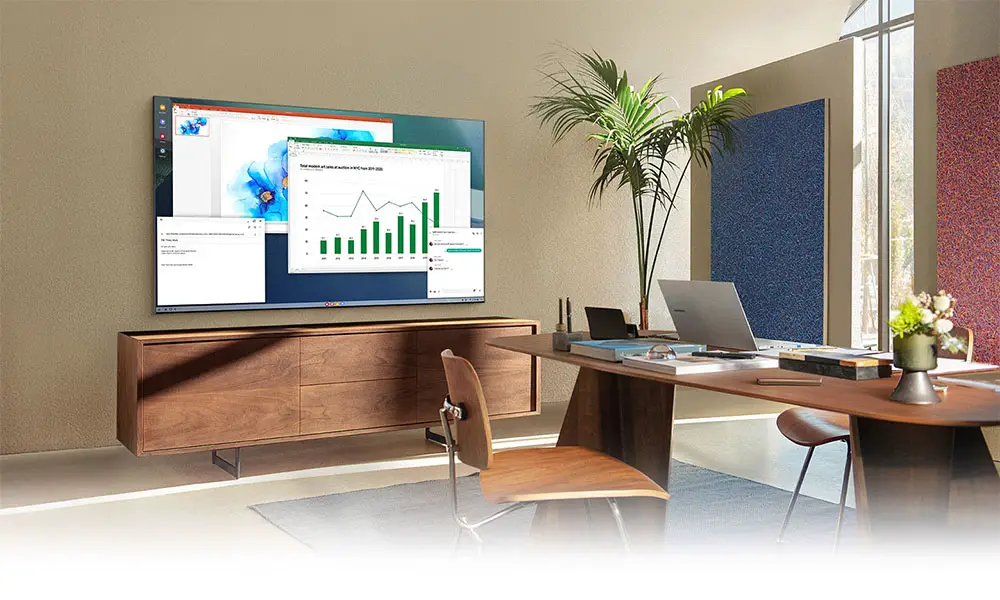
For more reviews you can check our dedicated 4K LED LCD TV reviews list or even look at our Product Reviews Table where you can find the brand and specific product you are looking for.
Cheapest Places to Buy :
*We are a reader-supported website. When you buy through links on our site, we may earn a small affiliate commission at no extra cost to you. Home Media Entertainment does not accept money for reviews.*
Thank you again Stratos for your review of the Q70A. My mum is also looking for a TV with voice commands, and we really appreciate how reasonable it sounds at that price! I’m going to look into more Sony reviews as well since my brother loves this brand. The only brand I don’t want is LG. I had some bad experiences with them over the last few years.
All three big manufacturers have good models in 2021. But it all depends on your budget limit. If you can be a bit more specific I may be able to offer you some suggestions.
I have the 55inch Q60 from 2 and half years ago. Which is probably the best TV I have ever owned, I am leaning towards making another upgrade however. In your opinion, do you think the Q70A would be worth the money to upgrade from the Q60? I really prefer to get another Samsung.
Hey there. Since you mention 2 years ago I assume you mean the Q60R from 2019? If that is so then the new Q70A is certainly better than that. First of all the Q70A has more brightness, better contrast, slightly better viewing angles, lower input lag and also comes with HDMI 2.1. Now the differences are not huge so I don’t know if it is worth it to pay full price for it but if you are looking for some improvement, even a small one, then the Q70A definitely is.
Hi there, great review thanks so much.
I want to upgrade my Samsung KS7300 49” from 2016. Would the Q70A be a good upgrade overall?
Hey Jeff. Unfortunately I have not tested the KS7300 myself so I cannot tell you if it is better or not. Obviously we are talking about a 5 years old model so in terms of features the Q70A certainly has much more. It’s the image quality I cannot tell you for sure.